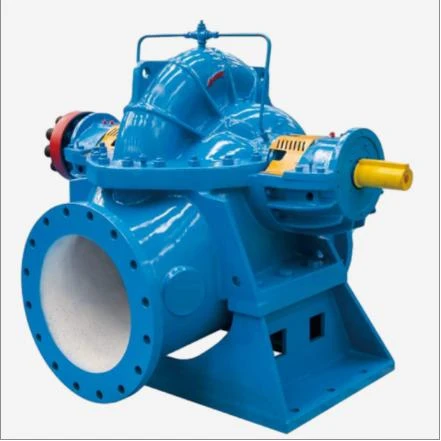Gujarati
- Afrikaans
- Albanian
- Amharic
- Arabic
- Armenian
- Azerbaijani
- Basque
- Belarusian
- Bengali
- Bosnian
- Bulgarian
- Catalan
- Cebuano
- Corsican
- Croatian
- Czech
- Danish
- Dutch
- English
- Esperanto
- Estonian
- Finnish
- French
- Frisian
- Galician
- Georgian
- German
- Greek
- Gujarati
- Haitian Creole
- hausa
- hawaiian
- Hebrew
- Hindi
- Miao
- Hungarian
- Icelandic
- igbo
- Indonesian
- irish
- Italian
- Japanese
- Javanese
- Kannada
- kazakh
- Khmer
- Rwandese
- Korean
- Kurdish
- Kyrgyz
- Lao
- Latin
- Latvian
- Lithuanian
- Luxembourgish
- Macedonian
- Malgashi
- Malay
- Malayalam
- Maltese
- Maori
- Marathi
- Mongolian
- Myanmar
- Nepali
- Norwegian
- Norwegian
- Occitan
- Pashto
- Persian
- Polish
- Portuguese
- Punjabi
- Romanian
- Russian
- Samoan
- Scottish Gaelic
- Serbian
- Sesotho
- Shona
- Sindhi
- Sinhala
- Slovak
- Slovenian
- Somali
- Spanish
- Sundanese
- Swahili
- Swedish
- Tagalog
- Tajik
- Tamil
- Tatar
- Telugu
- Thai
- Turkish
- Turkmen
- Ukrainian
- Urdu
- Uighur
- Uzbek
- Vietnamese
- Welsh
- Bantu
- Yiddish
- Yoruba
- Zulu
Telephone: +86 13120555503
Email: frank@cypump.com
મે . 16, 2025 09:57 Back to list
Single vs Double Suction Pumps Efficiency, Design & Use Cases
- Fundamental Design Variations in Centrifugal Pump Construction
- Hydraulic Performance Metrics: Flow Dynamics Compared
- Operational Efficiency Analysis: Energy Consumption Patterns
- Manufacturer Comparison: Technical Specifications Across Brands
- Application-Specific Engineering Solutions
- Industrial Case Studies: Real-World Implementation
- Maintenance Considerations for Optimal Pump Selection

(difference between single suction and double suction pump)
Understanding Single Suction and Double Suction Pump Differences
Centrifugal pump configurations diverge significantly in fluid entry mechanisms. Single suction designs employ one fluid intake path through the impeller eye, while double suction models feature dual opposing entry points. This structural distinction impacts:
- Axial thrust balance (Double suction: 85-92% balanced vs. Single: 40-60%)
- NPSH requirements (Double suction reduces NPSHr by 30-45%)
- Bearing load capacities (Double suction handles 2.1-2.8x higher radial forces)
Hydraulic Performance Metrics
Flow characteristics reveal critical operational variances:
| Parameter | Single Suction | Double Suction |
|---|---|---|
| Max Flow Rate (m³/h) | ≤ 2,800 | ≤ 15,000 |
| Efficiency Range | 78-84% | 86-92% |
| Pressure Fluctuation | ±12% | ±6.5% |
Manufacturer Technical Comparison
Leading pump manufacturers demonstrate distinct engineering approaches:
| Brand | Model | Type | Flow Capacity | Head (m) | Efficiency |
|---|---|---|---|---|---|
| Flowserve | HDX-400 | Double | 12,500 m³/h | 150 | 91.2% |
| Sulzer | APP-465 | Single | 2,750 m³/h | 85 | 83.7% |
Custom Engineering Solutions
Specialized applications require tailored configurations:
- High-Salt Applications: Double suction with super duplex impellers (CRA lining)
- Mining Slurry Systems: Single suction with hardened wear plates (HRC 58-62)
- Thermal Power Cooling: Bi-directional double suction units (3,500 RPM capability)
Industrial Implementation Cases
Recent installations demonstrate performance characteristics:
Middle East SWRO Plant: 18×Double suction pumps achieved 93.4% uptime with 0.38% efficiency degradation/year
Canadian Oil Sands: Single suction units maintained 81% efficiency despite 34% solids content
Essential Maintenance Factors for Pump Selection
Lifecycle costs reveal critical differences between single and double suction centrifugal pumps:
- Bearing replacement cycles: Double suction (42-54 months) vs. Single (22-31 months)
- Seal maintenance frequency: Double suction requires 38% fewer interventions
- Mean Time Between Overhauls: 64,000 hours (Double) vs. 41,000 hours (Single)

(difference between single suction and double suction pump)
FAQS on difference between single suction and double suction pump
Q: What is the main structural difference between a single suction and double suction centrifugal pump?
A: A single suction pump allows fluid to enter the impeller from one side, while a double suction pump draws fluid from both sides of the impeller, balancing axial thrust and enabling higher flow rates.
Q: How does efficiency differ between single and double suction pumps?
A: Double suction pumps typically have higher efficiency due to reduced hydraulic losses and balanced axial forces, whereas single suction pumps may experience more wear and lower efficiency at high capacities.
Q: In what applications are double suction centrifugal pumps preferred over single suction pumps?
A: Double suction pumps are ideal for high-flow, high-pressure systems like water supply or large HVAC systems, while single suction pumps suit low-to-medium flow applications like small industrial processes.
Q: What maintenance advantages do double suction pumps offer compared to single suction pumps?
A: The symmetrical design of double suction pumps minimizes axial vibration and bearing wear, reducing maintenance needs, whereas single suction pumps require more frequent checks due to uneven forces.
Q: Why might a single suction pump be chosen despite the benefits of double suction designs?
A: Single suction pumps are simpler, more compact, and cost-effective for smaller systems, whereas double suction pumps involve higher initial costs and complexity for large-scale operations.
-
High Efficiency Horizontal Split Case Pump for Industrial Use
NewsJul.25,2025
-
Flue Gas Desulfurization Pump for Efficient Chemical Processing
NewsJul.24,2025
-
High-Efficiency Axial Flow Pump for Water Transfer & Irrigation
NewsJul.23,2025
-
High-Efficiency Horizontal Split Case Pump for Industrial Use
NewsJul.22,2025
-
Reliable Septic Tank Pumps | Durable & Clog-Resistant
NewsJul.22,2025
-
Here is the optimized TDK set for "axial flow pump": ``` Axial Flow Pump: High-Efficiency & Reliable Water Transfer Solutions
NewsJul.21,2025










